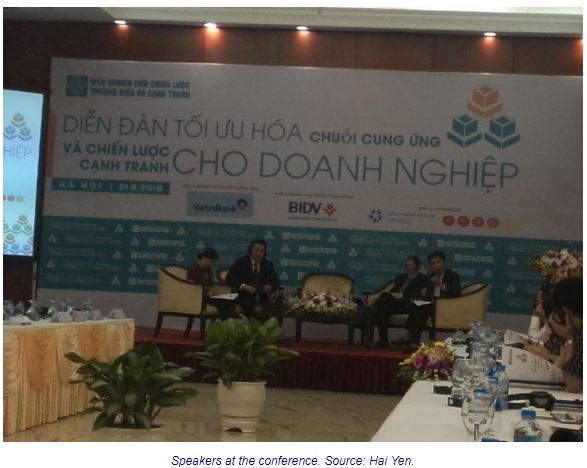Logistics is new growth engine for Vietnam’s sustainable development: experts
High logistics cost leads to low competitiveness of Vietnam’s exports and a low return for the economy, said Nguyen Van Nam, president of the BCSI at a conference on August 21. “Vietnam’s logistics cost is two or three times higher than other countries with similar scale of economic scale.”
In the process of economic integration, Vietnam has trade relations with 180 countries and attract investments from over 100 countries and territories. However, Vietnamese companies do not create much value addition in the supply chain, as most of them only participate in the lower end of the global value chain, Nam added.
About 21% of small and medium enterprises (SMEs) in Vietnam joined the global supply chain while the percentages in Thailand and Malaysia are 30% and 46%, respectively. Thus, Vietnamese enterprises are less likely to benefit from the spillover effects of FDI firms through the technology transfer, know-how and management skills, he added.
The challenge for Vietnam in the coming time would be to form and optimize modern supply chain, reducing costs and enhancing competitiveness for enterprises and economy as a whole, Nam stressed.
“As a market economy, there is no other option for sustainable development than a high competitiveness,” Nam continued.
Logistics as competitive advantage
Vo Tri Thanh, director of BCSI, stated 47% of Vietnamese enterprises reported profit by the end of 2016, citing high logistics costs as one of the main reasons.
Thanh pointed to three reasons behind local companies’ low efficiency in supply chain management. Firstly, companies are not fully aware of the supply chain and related legal frameworks.
Secondly, the lack of expertise among enterprises and the drive to optimize their supply chains.
Thirdly, government agencies should play more active role in reducing the logistics costs, which is currently making up nearly 16% of GDP.
“Enterprises should understand that logistics is not purely of reducing production cost, but represent their competitive advantage,” Thanh added.
Sharing Thanh’s view, Jay Fortenberry, lecturer at Portland State University and chairman of the Fortenberry Group, said ultimately, the goal of the supply chain is to produce a competitive advantage to the business, which can only be done by providing the best possible service to customers.
Daniel Wong, Fortenberry’s colleague at Portland State University, said he saw inadequate logistics infrastructure as the biggest risk for Vietnam to become ideal destination for investors and facilitate its role in global supply chain.
“Improvements in roads, sea and airports are what Vietnam should focus on,” Wong said.
Wong also added that Vietnam should address the issue of lacking qualified human resources in logistics sector, which is considered a long-term solution for Vietnam’s logistics development.


 English
English




